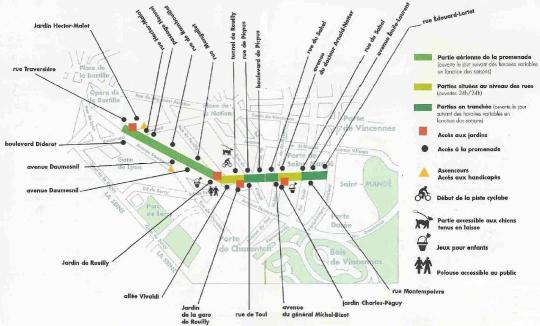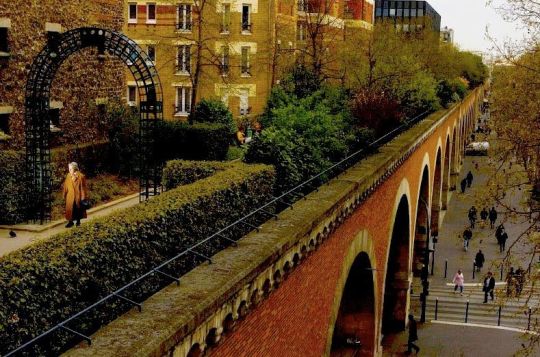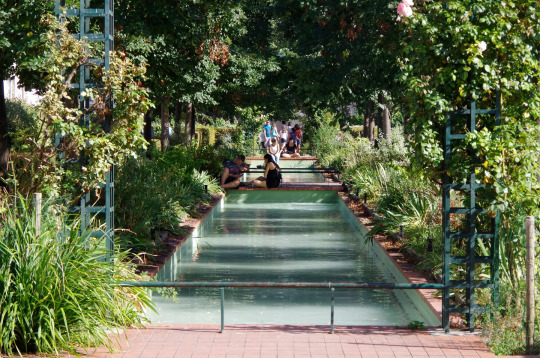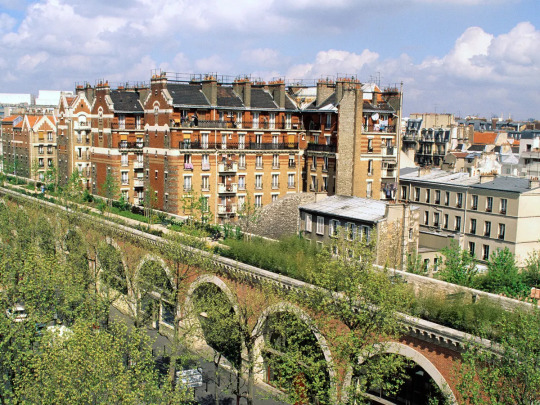#Charles Peguy
Explore tagged Tumblr posts
Text
Charles Péguy, Le mystère de la charité de Jeanne d'Arc
JEANETTE . - Vingt siècles, je ne sais combien de siècles de prophètes. Quatorze siècles de chrétienté. Il ne faut qu’un instant pour faire damner une âme. Il ne faut qu’un instant pour une perdition. C’est toujours la même chose, la partie n’est pas égale. La guerre fait la guerre à la paix. Et la paix naturellement ne fait pas la guerre à la guerre. La paix laisse la paix à la guerre. La paix se tue par la guerre. Et la guerre ne se tue pas par la paix. Puisqu’elle ne s’est pas tuée par la paix de Dieu, par la paix de Jésus-Christ, comment se tuerait-elle par la paix des hommes ? Par une paix d’homme.
2 notes
·
View notes
Text

C’est pour cela que lorsqu’on leur met sous les yeux la vieille chrétienté, quand on les mets en face de ce que c’était dans la réalité qu’une paroisse chrétienne, une paroisse française au commencement du quinzième siècle, du temps où il y avait des paroisses françaises […] aussitôt quelques-uns de nos catholiques modernes, modernes à leur insu, mais profondément modernes, jusque dans les moelles, intellectuels à leur insu et qui se vantent de ne pas l’être, intellectuels tout de même, profondément intellectuels, intellectuels jusqu’aux moelles, bourgeois et fils de bourgeois, rentiers et fils de rentiers, pensionnés du gouvernement, pensionnés de l’Etat, fonctionnaires, pensionnés des autres, des autres citoyens, des autres électeurs, des autres contribuables […] quelques-uns de ces contemporains catholiques, devant une soudaine révélation de l’antique, de la vieille, de la chrétienté ancienne se hâtent de pousser quelques cris, comme de pudeur outragée. Dans un besoin ils renieraient Joinville, comme trop grossier, comme trop peuple. Le sire de Joinville. Ils renieraient peut-être bien saint Louis. Comme trop roi de France."
Charles Péguy, Notre jeunesse, 1910.
5 notes
·
View notes
Text

2 notes
·
View notes
Text
"Heureux deux amis qui s'aiment assez pour se taire ensemble."
Charles Péguy
0 notes
Text


Plaque en hommage à : Charles Péguy
Type : Lieu de travail
Adresse : 9 rue Victor Cousin, 75005 Paris, France
Date de pose : 2020 [inscrite]
Texte : Au rez-de-chaussée de cet immeuble, CHARLES PEGUY fonda la Librairie Georges Bellais, qui édita et diffusa des publications socialistes de mai 1898 à juillet 1899
Quelques précisions : Charles Péguy (1873-1914) est un écrivain français. Dans un premier temps marqué par un socialisme libertaire, il revient plus tard à un catholicisme mystique qui influencera nombre de ses écrits et le conduira également à un rejet de la modernité. Il s'intéresse également à la figure de Jeanne d'Arc, sur laquelle il produira une œuvre marquante, Le Mystère de la charité de Jeanne d'Arc, parue en 1897. Il meurt lors de la bataille de l'Ourcq lors des premières semaines de la Première Guerre mondiale. Il est honoré partout en France. Une autre plaque commémorative en son honneur peut être trouvée à Paris, et une autre à Orléans, où un centre culturel porte son nom.
0 notes
Text

JUANA SE DESPIDE DEL MOSA
Adiós, Mosa moroso de mi infancia, que quedas en los prados, rumorando. Mosa, adiós: que ya emprendo mi partida para otras tierras donde no discurres.
Mira que ya me parto a nuevas tierras: haré la guerra y pasaré los ríos; allá me ensayaré en empresas nuevas, allá me iniciaré en nuevos trabajos.
Y en tanto, Mosa suave y sin noticia, correrás siempre, usado transeúnte, por el valle feliz de yerba arrecha, ¡oh Mosa irrestañable que yo amaba!
Un silencio.
[…]
*
ADIEUX DE JEANNE À LA MEUSE
Adieu, Meuse endormeuse et douce à mon enfance, Qui demeures aux prés, où tu coules tout bas. Meuse, adieu : j’ai déjà commencé ma partance En des pays nouveaux où tu ne coules pas.
Voici que je m’en vais en des pays nouveaux : Je ferai la bataille et passerai les fleuves ; Je m’en vais m’essayer à de nouveaux travaux, Je m’en vais commencer là-bas des tâches neuves.
Et pendant ce temps-là, Meuse ignorante et douce, Tu couleras toujours, passante accoutumée, Dans la vallée heureuse où l’herbe vive pousse,
O Meuse inépuisable et que j’avais aimée.
Un silence.
[…]
Charles Peguy
di-versión©ochoislas
#Charles Peguy#literatura francesa#poesía mística#Juana de Arco#despedida#vocación#empresa#Mosa#di-versiones©ochoislas
0 notes
Text
Il voulait être un artiste, pour cela même il s’appliquait; mais il le fut bien naturellement, par la force d’un regard décidé, d’un cerveau rêveur et d’un goût profond pour la logique.
0 notes
Text
"He who does not bellow the truth when he knows the truth makes himself the accomplice of liars and forgers."
Charles Peguy, poet and essayist (7th January 1873-1914)
0 notes
Text
Charles Peguy: Accomplice of liars and forgers
“He who does not bellow the truth when he knows the truth makes himself the accomplice of liars and forgers.” —Charles Peguy.
View On WordPress
0 notes
Text
youtube
#reflexion#passionist#vidahaiti#hugocp.net#evangelio dominical#catolico#adviento#escuela de la esperanza#evangelio de marcos#charles peguy#Youtube
0 notes
Text
Il y a quelque chose de pire que d'avoir une mauvaise pensée. C'est d'avoir une pensée toute faite.
Charles Péguy, Les oeuvres posthumes de Charles Peguy.
28 notes
·
View notes
Text

Felici due amici che si amano abbastanza da saper tacere insieme.
|| Charles Peguy
10 notes
·
View notes
Text
"Pour la première fois dans l'histoire du monde les puissances spirituelles ont été toutes ensemble refoulées non point par les puissances matérielles mais par une seule puissance matérielle qui est la puissance de l'argent. "
Charles Peguy

5 notes
·
View notes
Text

"Pour la première fois dans l'histoire du monde les puissances spirituelles ont été toutes ensemble refoulées non point par les puissances matérielles mais par une seule puissance matérielle qui est la puissance de l'argent. "
Charles Peguy
3 notes
·
View notes
Text







La coulée verte, ou promenade plantée
Promenade plantee map
Map of promenade plantee. Promenade plantee map (Île-de-France - France) to print. Promenade plantee map (Île-de-France - France) to download. The promenade plantee is an original walk, which stretches from the Bastille to the Bois de Vincennes, takes you sometimes in the air and sometimes underground. The promenade plantee unique design will take you from viaduct to footbridge, from tunnel to trench, through the East of Paris. It was created in 1988 by Philippe Mathieux and Jacques Vergely, on the site of the old railway line that linked Place de la Bastille to Varenne-Saint-Maur since 1859. Disused in 1969, it gave way to a succession of gardens scattered over 4.5 kilometers: Hector Malot, Reuilly, Reuilly station, Charles-Peguy as its shown in promenade plantee map. Paris has some of Europe most beautiful parks but for something different search out the Promenade Plantee. The promenade plantee its magical, green stroll 10 metres above the street, which begins at the Bastille and winds through the 12th arrondissement for three miles as its shown in promenade plantee map, coming out before the Bois de Vincennes. When a long-abandoned mid-19th century viaduct was converted into the world first elevated park walkway in 1993, most locals thought it a waste of money. Parisians needed time to take a project like this to heart, but now the Promenade is a cherished landmark.
The promenade plantee crosses the entire length of the 12th arrondissement of Paris (4.5 km as its mentioned in promenade plantee map). The promenade plantee follows the route of an old railway line which ceased to be used in 1969. The terminus station was at the Bastille at the current location of the opera house, the trains went to Boissy-Saint-Léger where there is now the RER A. The promenade plantee starts behind the Bastille Opera House. It overlooks the avenue Daumesnil up to the Reuilly garden: it is the famous Viaduc des Arts. The Vivaldi alley is then the commercial part of the promenade. Then this one continues in tunnels and trenches and one ends up joining the golden door and the wood of Vincennes.
Escape Routes: Discover the Promenade Plantée, the Green Heart of Paris Before New York’s High Line there was Paris’ Promenade Plantée – an elevated walkway fashioned from a disused railway that threads together arts venues, bars and parks in the southeastern part of the city. Culture Trip’s Paris correspondent Eleanor Aldridge explores the route. Running above the mêlée of streets, squares and rail lines that crisscross southeast Paris, the Promenade Plantée is a green needle piercing the city’s heart. Beneath this elevated walkway, motos weave in and out of traffic, crowds gather near Place de la Nation for the latest protest and modern developments butt up against some of the 12th arrondissement’s most community-focused neighbourhoods. Ten metres above, a secret world awaits. Construction of the Promenade Plantée, officially known as the Coulée Verte René-Dumont, finished in 1993 – that’s 21 years before the arguably better-known High Line in New York. It runs for nearly five kilometres between Bastille and Vincennes, along a disused rail line that was once plied by chuntering steam trains.
The paved path cuts through parks and old tunnels, while arched green trellises are festooned with roses and framed by cherry blossom in spring. In winter the path becomes starkly beautiful, set against the imperious Haussmannian façades that run alongside it. It’s not only a great walking route – offering peeks into apartments along the way – but the Promenade Plantée also acts as a ready-made itinerary for exploring this corner of the city. Steps make it easy to nip down to street level, or it takes about an hour to walk to the wilds of the Bois de Vincennes.
Viaduc des Arts
The 19th-century railway arches running along Avenue Daumesnil were among the first stretches beneath the Promenade Plantée to be developed. Now known as the Viaduc des Arts, they house bars, studios, restaurants and gallery spaces. Confiture Parisienne is a must-visit: pick up a jar of award-winning jam – perhaps carrot, passionfruit and vanilla – or try a preserve-making class at the weekend. At airy bar-restaurant Gamelle, there’s also bowling, darts and table football, while the food spans hot dogs, tapas and French classics.
Ground Control
Founded six years ago, Ground Control has become the city’s hub for street food, pop-ups, events with a social conscience and anything in between. Sprawling across what was once an enormous SNCF train shed, it encompasses an open-plan food court, several bars, a shop and open spaces used for everything from yoga to painting classes. The buzzy terrace is the place in Paris to find a great spritz and an even better burger, cooked in a refurbished bus.
Bois de Vincennes
The Promenade Plantée ends at the city’s eastern green lung, the Bois de Vincennes – the mirror image of the Bois de Boulogne, west of the city centre. Making up for the lack of parks in central Paris, its 2,459 acres span lakes and woodland interlaced with shady pathways. Once a royal hunting ground, it’s the closest you can get to real countryside these days without leaving the city proper. In summer, festivals and concerts keep things lively well into the evening.
This story appears in Issue 6 of Culture Trip magazine: The Sustainability Issue.
3 notes
·
View notes

